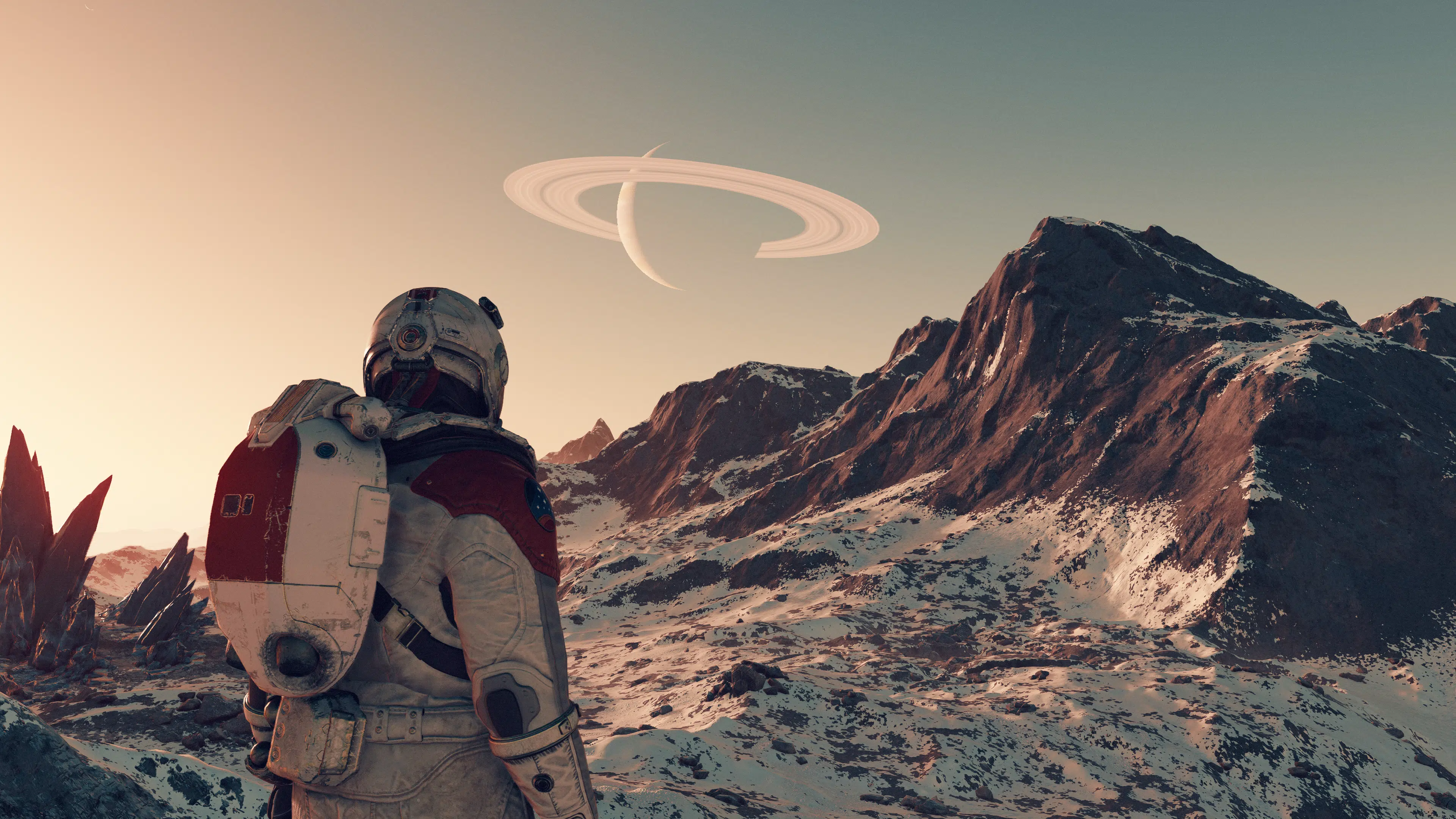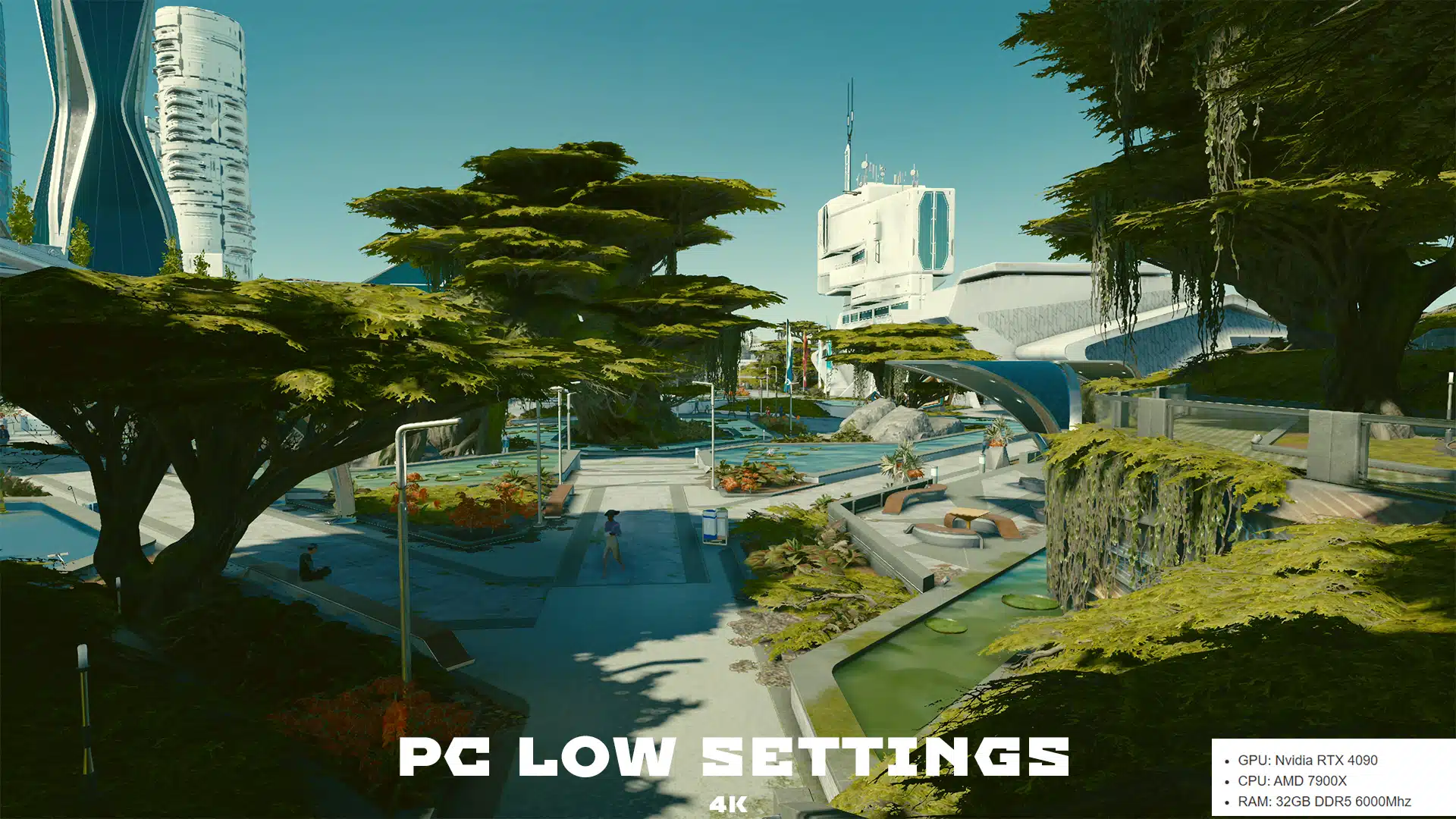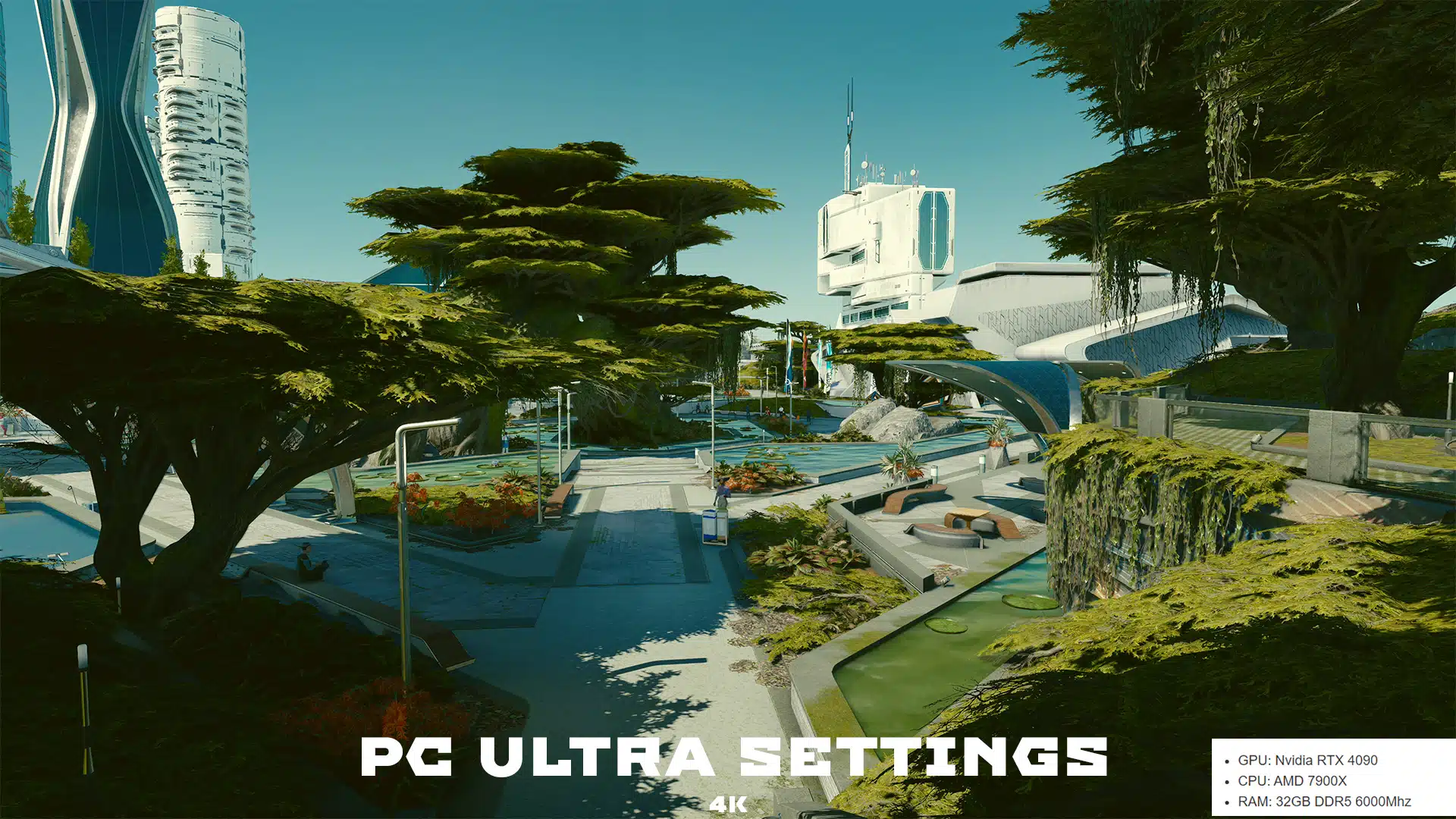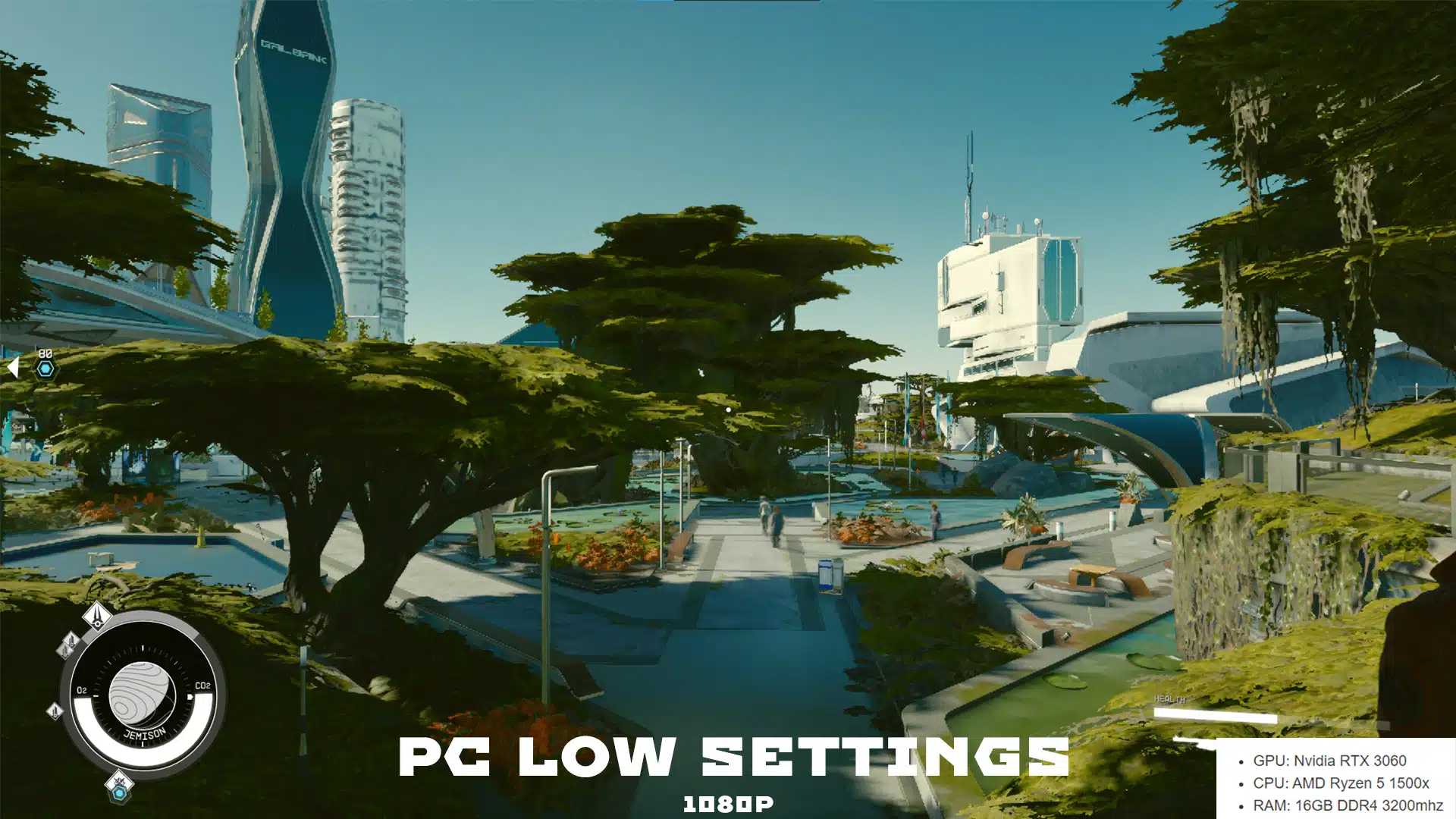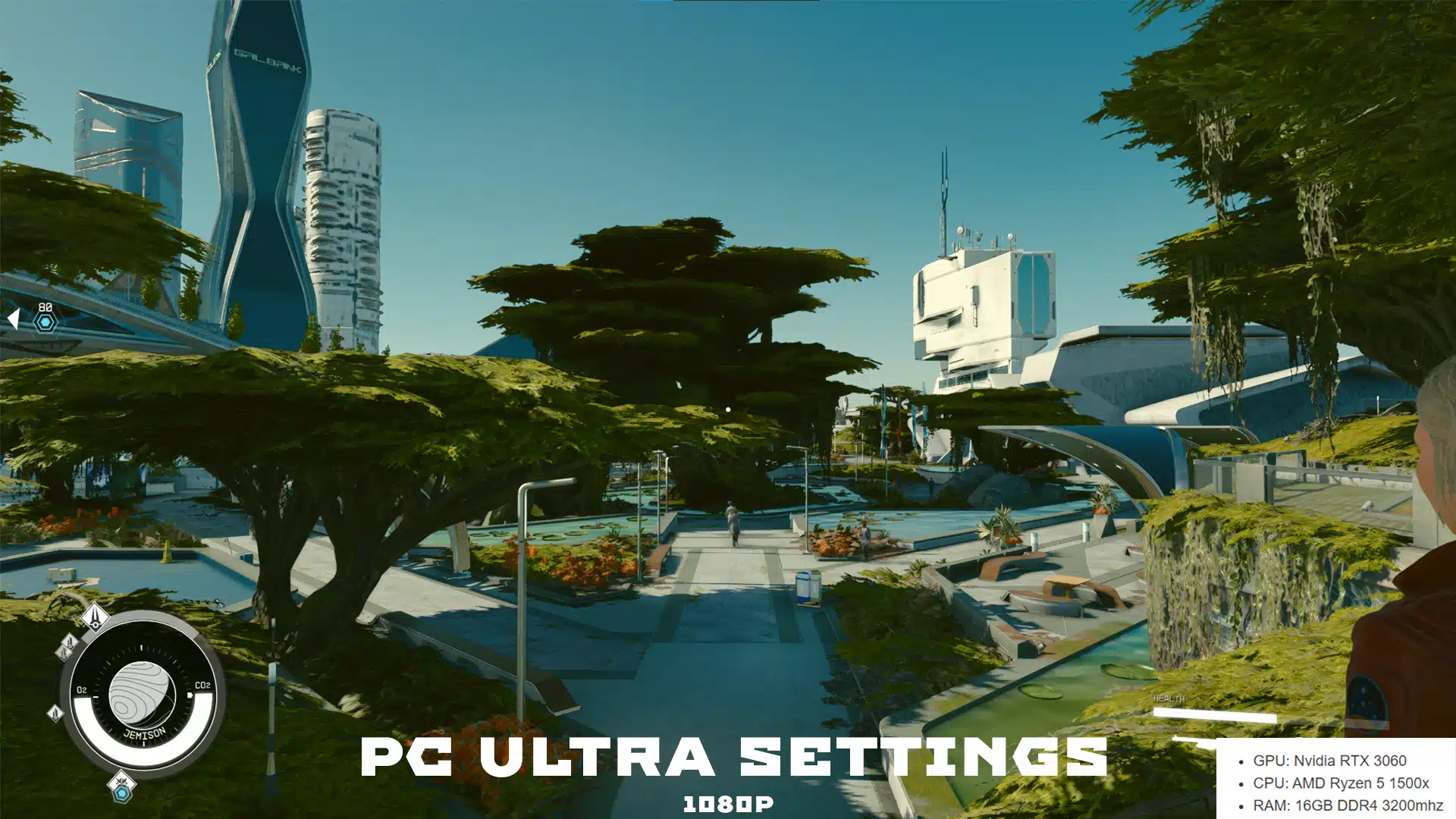It’s been 16 long years since Bethesda released an original IP, and today, we’re finally getting to venture into their most significant and most ambitious title yet and that’s Starfield. There’s a lot of controversy surrounding the title given not only its scope, but with Microsoft’s acquisition of Bethesda and how the game was flipped to be an Xbox console exclusive, there’s a lot riding on the game to be Microsoft’s first legitimate system-seller exclusive on the Xbox Series X|S.
The big question now here is: does it deliver? In a word, it’s a simple yes, but not without certain caveats.
Adventures Awaits in the Endless Sea of Stars
The tale of Starfield begins on a miner outpost in deep space. You play as a recruit who, after doing a bit of mining, comes in contact with a mysterious metal artifact. Upon touching it, visions begin to flash before your eyes. Are they of the past? The future? Or something else entirely? Whatever they were, it seemed to have gotten the attention of a group called the Constellation. Members of the group consist of people from all reaches of the universe, each having come in contact with different artifacts, sharing similar tales of the visions you saw. They proclaim they’re peaceful explorers, traveling across systems in search of pieces of these artifacts, as they seemingly react with one another, forming a shape of sorts. And what exactly it does that’s the mystery you’ll need to solve for yourself.
This is the premise of Starfield’s main campaign, and if you think it’s centered around finding a MacGuffin, you wouldn’t be far off.
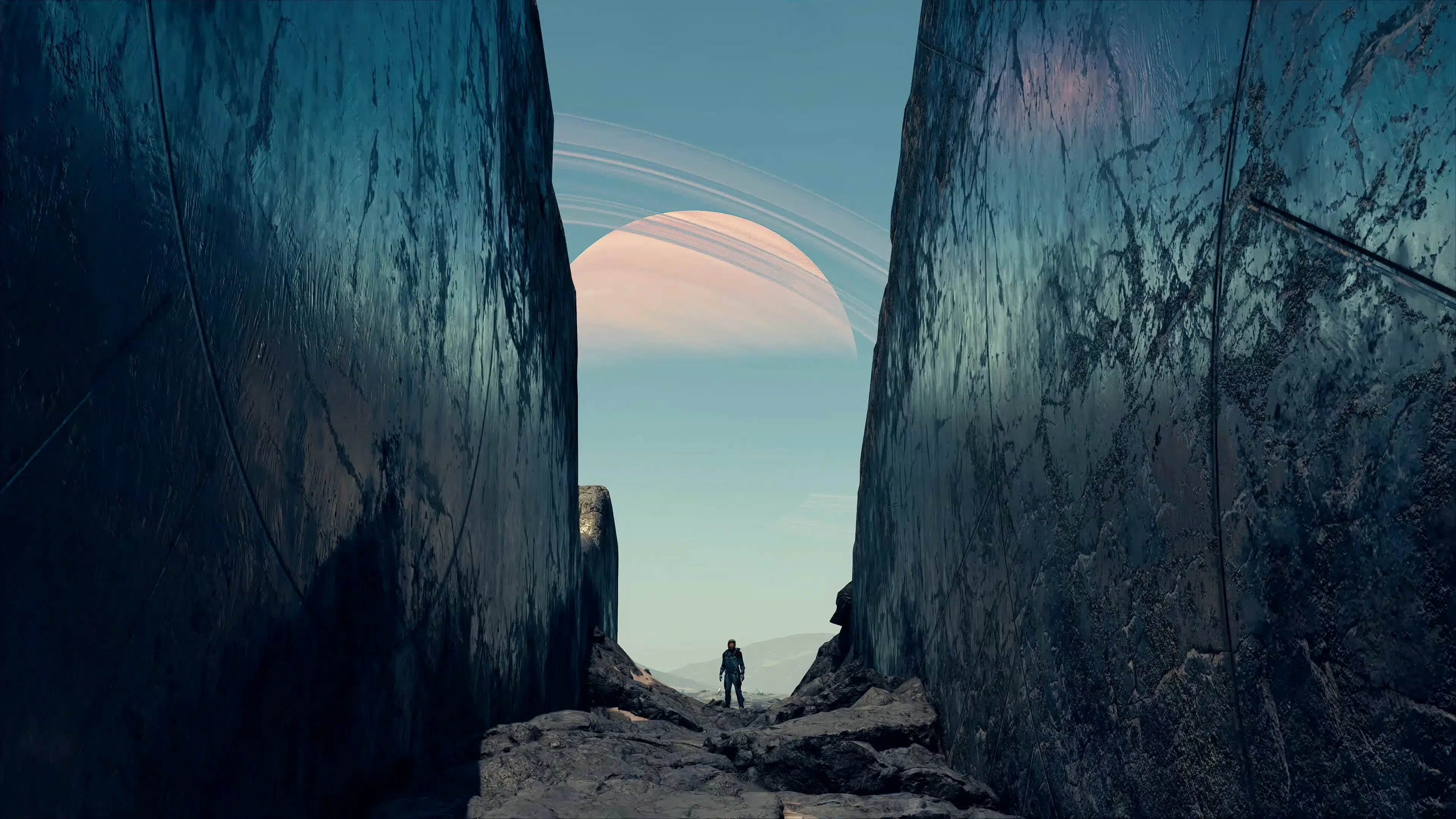
Its central plot is focused on finding these pieces, and while not the most original, in execution, I promise it’s one tale you’ll undoubtedly get invested in.
However, in my 12 to 15 hours spent on the campaign alone, I learned that the story of what Bethesda was telling wasn’t at all that important. It’s a story that I’m sure many will come to love, but it’s not THE story that many will focus on. Instead, what I believe Starfield wants to tell is your story and what you’d do if you had limitless possibilities in a universe brimming with opportunities.
My journey didn’t start when a directive told me where to go and what to do. It started when I decided to break free from the path of destiny, searching for my meaning in life in this bold new world. For me, I was set on the life of a bounty hunter, going around and tracking down the most dangerous and wanted criminals in all the systems. I had nothing but a trash heap of a ship and only a few credits to my name, but I was determined to make this life work.
So, rather than follow the first major story waypoint after the introduction, I decided to explore New Atlantis, the capital city of the United Colonies. As a newbie, I thought the perfect place to start would be to go around asking the locals, and sure enough, it eventually led me to the UC’s security offices, a place where my story would begin.
But before I could take on any bounties, I realized I needed guns, armor, and, most of all, a ship capable of taking me anywhere, with the firepower to take on an entire fleet. So, I had to take on the little missions, earn money, and slowly build up my power and reputation.
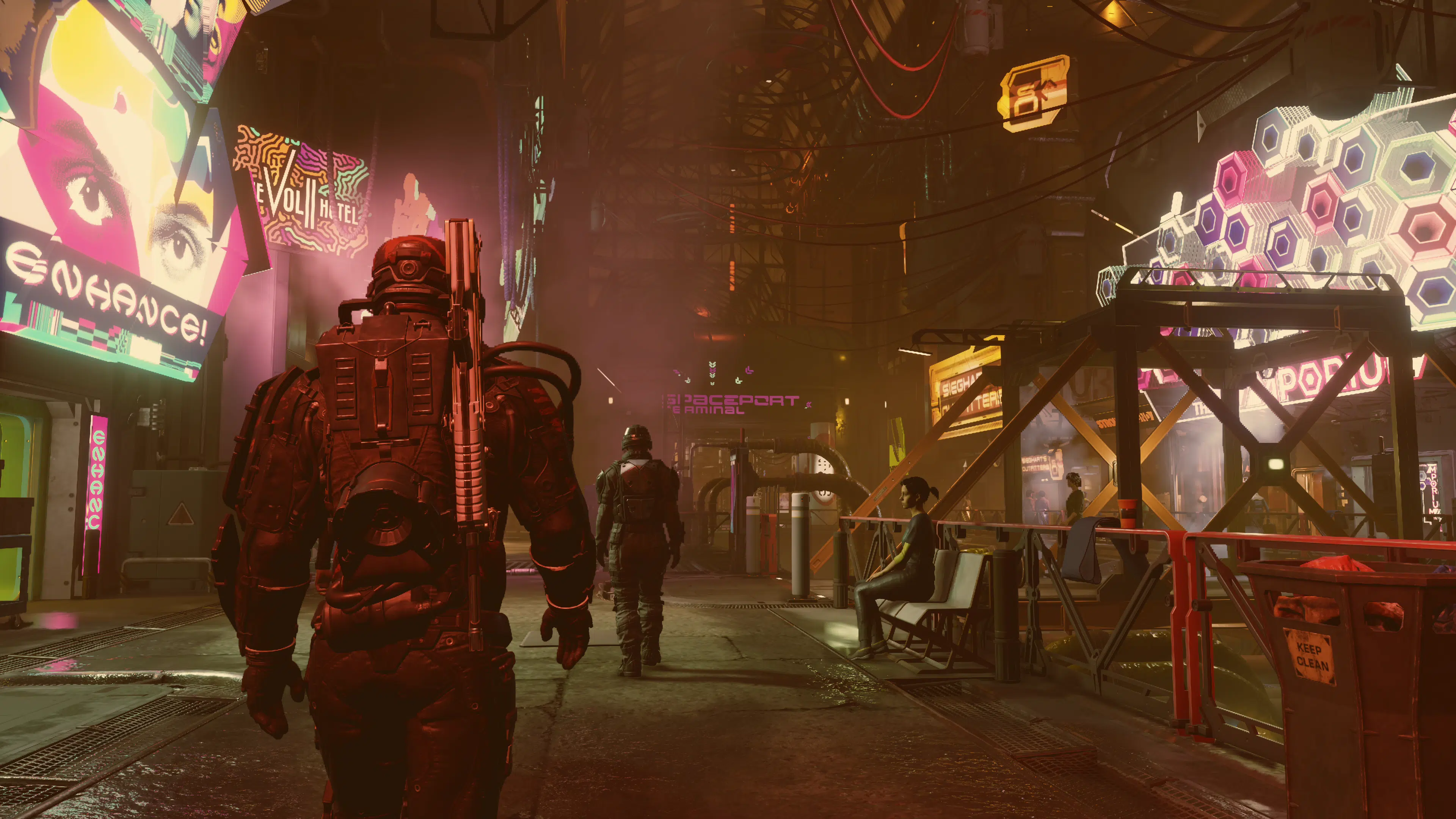
It was a long journey, but after 20 hours, I had achieved my dream of becoming one of the most well-known bounty hunters in the entire system. I was respected and looked up to by the common people yet feared by all wanted criminals. It was a life that I was proud of, and if I wanted, I could probably play the game without ever touching the main campaign again.
This is where Starfield shines in its narrative. It may lay a path for you to follow, but you don’t have to in this massive universe that Bethesda has crafted. It wants you to play the role you desire and offers you as much freedom as possible to take it. So, instead of being a bounty hunter, maybe I wanted to go out and be an explorer, searching every planet for signs of life and treasures, such as historical artifacts and other things of value.
Maybe I wanted to join and lead a gang in the cyberpunk city of Neon. Or perhaps get hired by a corrupt megacorporation and do some corporate espionage, stealing from a rival business to take them down.
Not a fan of any of that? Well, how about living out that Western film fantasy, becoming sheriff of a small settlement, stopping bank robberies and other crimes from the local outlaws? Be that badass space cowboy that you’ve always dreamed of being.
You could even get a job in a chemical factory, risking your health to mix highly toxic chemicals, all so some businesses can profit off you and give you pennies on the dollar for your work. It’s a miserable life, but it’s there.
Starfield is a game that wants you to be who you want to be, however and whenever. It’s the ultimate role-playing game set in space.
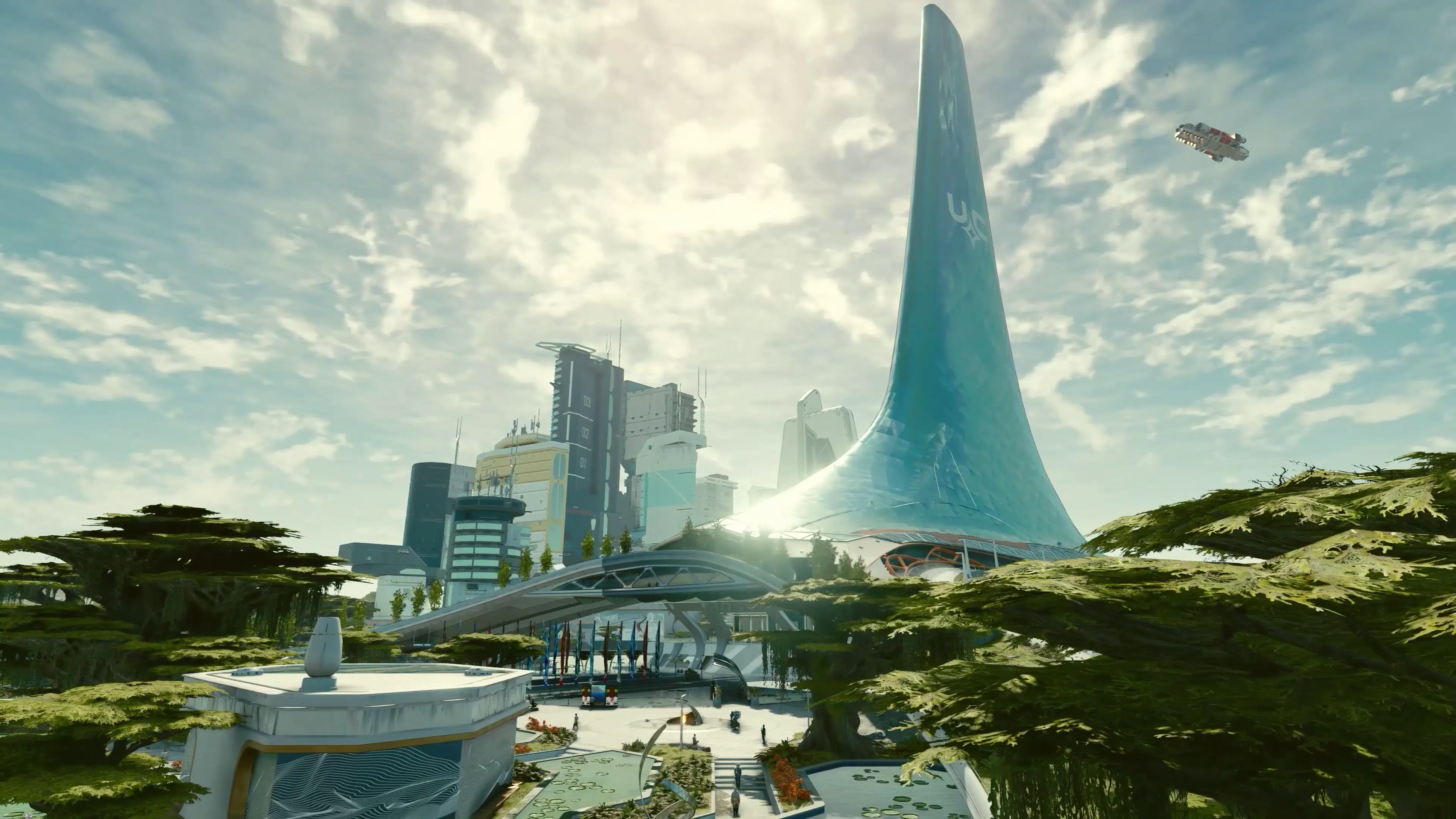
There is so much content, so much to see and do in Starfield, and every time a new activity popped up or I went after a different role, I felt as if I was playing an entirely different game each time. The funny thing is, I’m well over 70 hours, and I’ve only felt I’ve scratched the surface as there is a load of content still for me to play through. I could probably spend an entire decade in this game and still only feel as though I’ve seen a glimpse of what it truly offers.
Now, it helps that there are a lot of components connecting everything nicely. Take the voice acting. It’s terrific, and whoever directed it deserves every ounce of praise thrown at them. Characters come off as believable, and I can sit there for hours listening to them tell me the universe’s rich history.
And don’t get me started on the soundtrack. It’s some of the best we’ve heard in a Bethesda game. I could listen to it all day, and the in-game mixing is fantastic. It’s almost like you have an orchestra behind you, knowing exactly what piece to play and when. The composer, Inon Zur, doesn’t miss a single note.
Into the Eye of the Universe
On the gameplay side, fans of Bethesda games should expect familiar mechanics in Starfield as in their past games. There’s a companion system, faction reputations, crafting, cooking, lock picking, pickpocketing, and more. Of course, the extensive dialogue system that the studio has been known for is also present, with each decision potentially offering you different outcomes in certain situations.
But there are some significant improvements that Starfield introduced. For starters, the gunplay. I’ve always found Fallout and Oblivion to be too sluggish in movement. Some may think that’s part of the charm of those games, but I could never get behind the way combat and movement felt. Starfield changes it for the better, as the character movement feels good and looks smooth in animations. It’s more “realistic.” There’s even a full-on sprint, which doesn’t feel like running in mud.
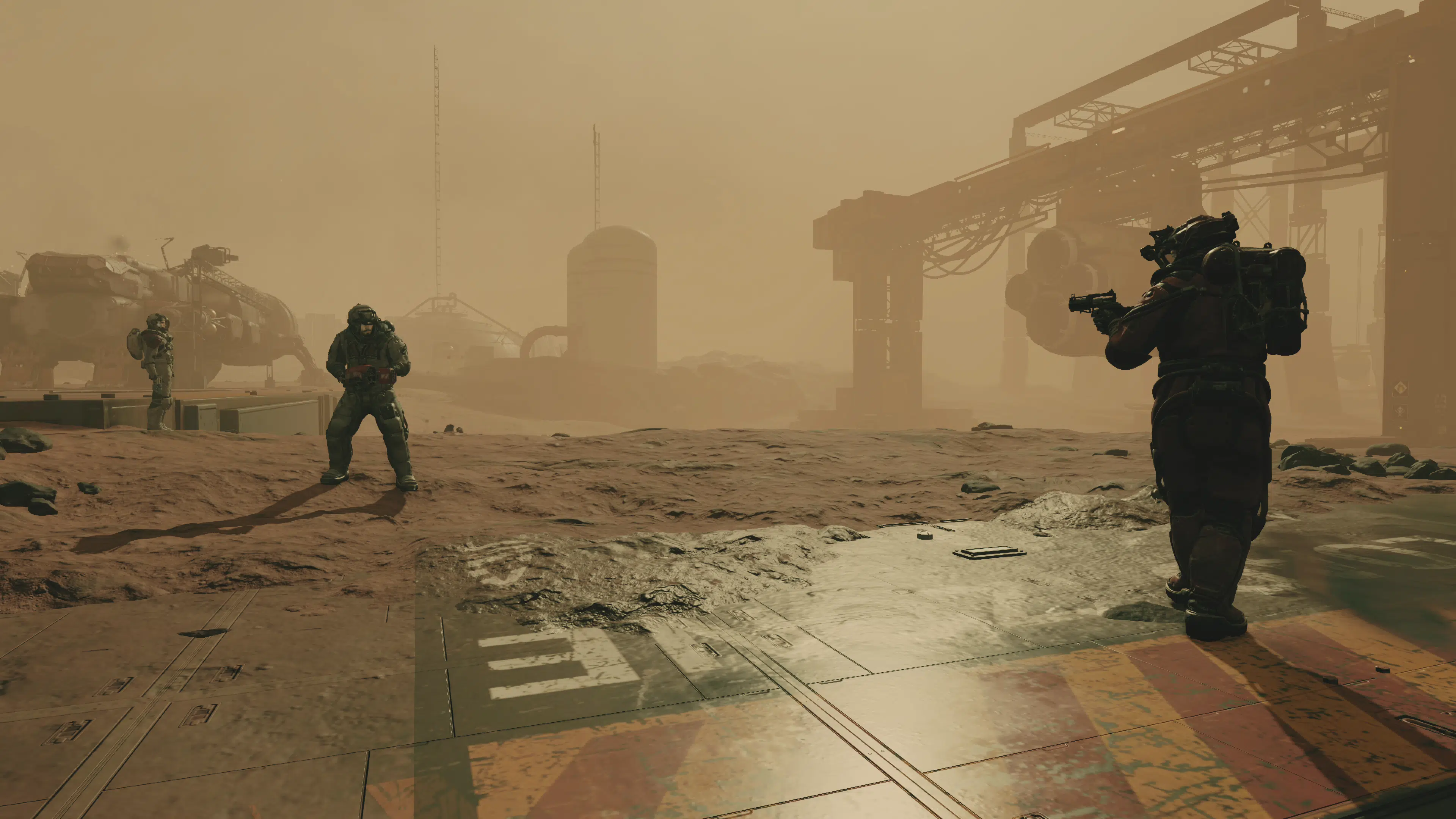
Weapon recoil is much more punchier, but not to the point where you don’t have complete control over it. The aiming speed has been increased. It’s not crazy like Call of Duty or Doom, but it’s a big step up from what it was before, and I’d say it’s damn near perfect for a Bethesda game.
Elsewhere, character animations and world physics have been drastically overhauled for Starfield. You’ll still get some characters that look like they’re staring into the void, but for the most part, Bethesda has done a fine job with their animations for a game of this scale. The physics changes are even more interesting, as different planets have different gravitation and other physic-altering effects. On some planets, you’ll float up as you jump, while on others, you’ll sink like a rock thrown in a lake. It’s fun being able to move around in these environments seeing all the different conditions.
The real-time weathering system is bigger and better than before, something that Fallout 4 had previously improved on. You can expect rain, clouds, sunlight, mist, fog, and all the different types of weather we get on Earth. But space and all the planets found in it can be rather violent. Take Mars, a world that is primarily red dust. Massive sandstorms will roll in randomly, only for it to clear and then suddenly begin to pour acid rain. It hurts, and you must find safety quickly or risk having a painful and slow death. Land on a cold, frozen planet, and you’ll instantly feel the Arctic temperature creep, only to get stuck in a blizzard. When it comes to the weather, expect the unexpected.
Space combat (space in general) is something new for Bethesda, and they’ve nailed i, which is a huge accomplishment give this is the studio’s first take on it. Flying a spacecraft is a fantastic feeling, as it’s easy to control but very satisfying when you can pull off crazy maneuvers. There are clear inspirations taken from games like Elite Dangerous and No Man’s Sky, but I’d say what Bethesda has built is far more accessible and easy for anyone to pick up and master.
There’s shipbuilding, too, as you can modify an existing ship or start from scratch and build whatever ship design you desire. Don’t be surprised if you see iconic ships such as the Millennium Falcon from Star Wars and the Normandy from Mass Effect make their way into Starfield from the shipbuilder. I’ve toyed around with it a few times and love the complexity behind it and how much you can modify on a ship. There’s also an outpost building, which in many ways, is like the Fallout 4 settlement building. I didn’t touch this, and I’m sure I’m missing out, but base building has never been my thing.
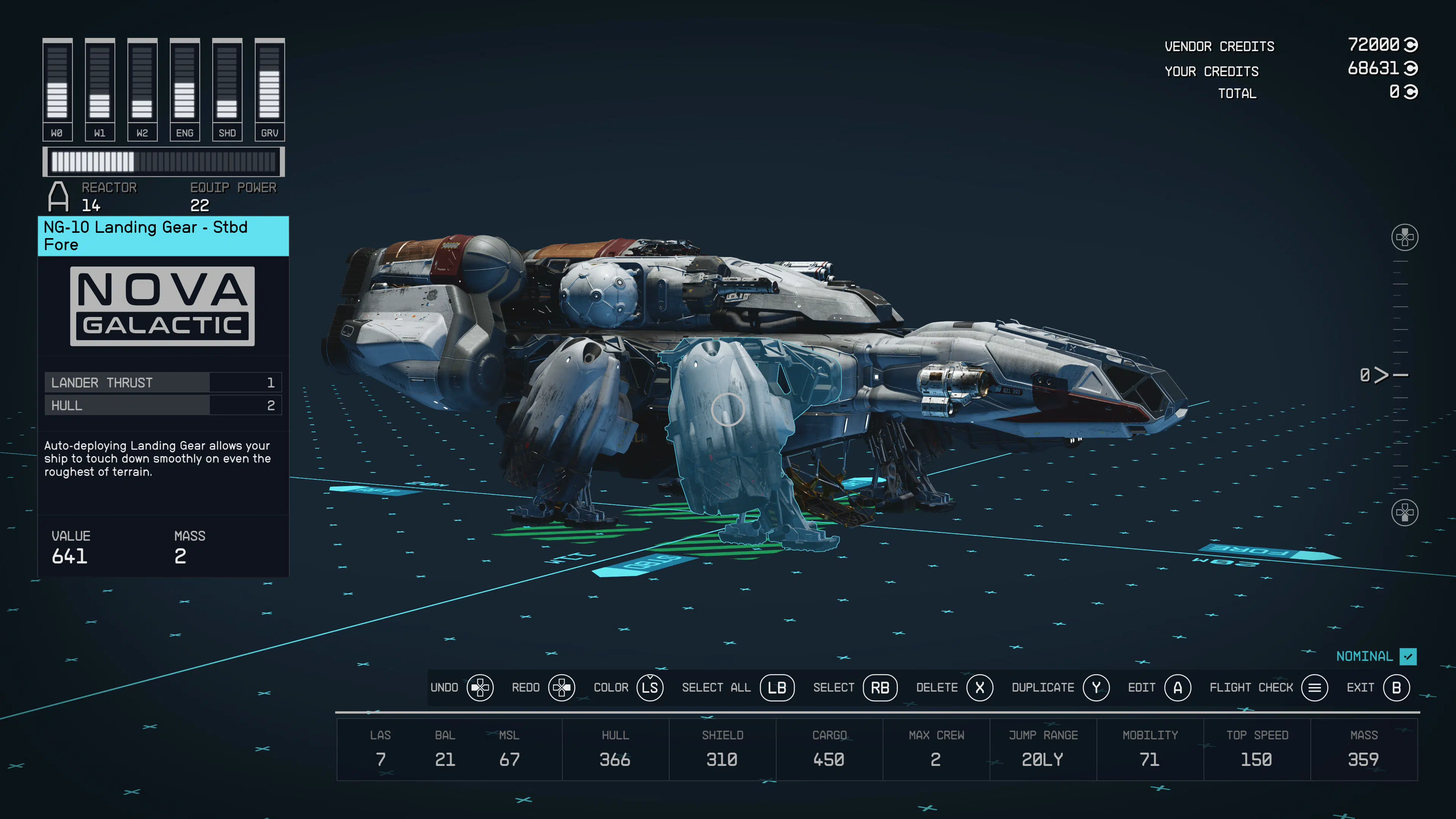
The dialogue tree has also changed again, though it’s more of a return to form. Fallout 4 left much to be desired, as many options didn’t matter. Sure, it had the most hilarious dialogue at times, but I think most can agree that a good chunk of choices had no real bearing on their outcomes. Tell a character one thing, and they do the very opposite that your choice was supposed to avoid. There were a lot of false options to pick from, creating an illusion of free will when it all stuck to the script. Starfield reverts that (for the most), with dialogue options doing what they intend to do, so it feels like you’re in control. Plus, they’re very meaty when it comes to lore, which is a great thing, considering this is a new IP.
Factions and companion quests are also back and bigger and better than before. Some of the quest lines are just as long as the campaign itself. Sadly, though, there isn’t (unless I’m blind) a morality or karma system in Starfield; some will see that as a blessing, which I can agree with since these systems have always been more misses than hits. But outside of all the NPCs getting mad at you, if you try to kill someone, there aren’t any evil choices to play around with. Factions also don’t care if you side with an opposing one. It basically removes consequences from player actions, which is a bit of a bummer. New game plus exists, so it’s sort of odd to me I can’t just go around wiping everyone out, since they’ll be back anyway in a NG+ run.
There are a few other things that make Starfield feel dated, and others plain annoying. I’ll start with the one that’s been in all Bethesda games: the weight limit. This might be a hot take, but I never liked this mechanic, or at least how it’s been implemented. In Starfield, it’s easy to get encumbered due to all the things you pick up, and a lot of times, there’s no good way to unload it. It slows you down, and you can’t fast-travel with it to sell it off to a merchant. You can offload it to a companion, but their space gets full quickly, and you are stuck debating which of the few items you want to keep. Resources, especially, can quickly cause you to be heavy. So, do you want to keep these ship parts to help you repair your ship during combat, or do you want to keep all these high-power weapons and gear? It’s a constant battle of being forced to decide, and walking back with it all isn’t fun.
Luckily, you can level up and find gear with increased weight stats, but still, it bugs me that this game has solved interstellar travel yet can’t figure out a portable storage solution or give you more starting weight capacity. I mean, it has figured it out; you just can’t access it, which comes to my next annoyance: the lack of land vehicles.
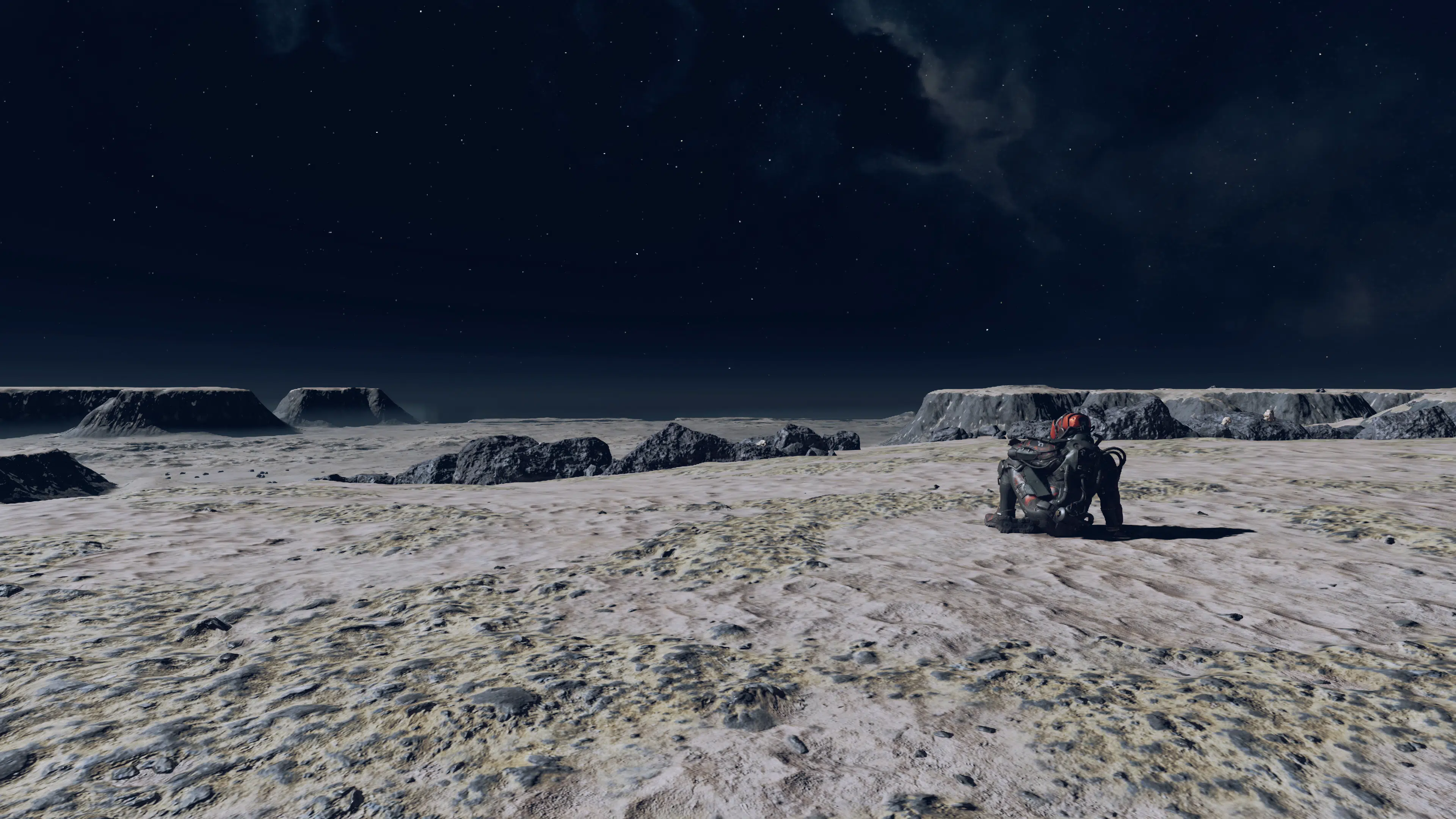
As I’ve mentioned, Starfield is a big game, touting 1000 explorable planets. Only a few are handcrafted, which is fine, given that even in real life, only a few planets have been found that might be possible to house life, and that’s a big might. But you can land on any of these planets and explore them, though with some caveats; it’s not seamless exploration. Worlds are fully explorable, but by sections, meaning you have to land in a new spot to explore a different section. I don’t think this is all that much of an issue. Would I have liked it to be one massive connected map? Sure, I guess, but I can’t picture myself walking around for 50+ hours on some of these barren planets, especially since it all gets procedurally generated. There’s not a lot going on in most of these planets, and you’d likely only ever land to get some resources for crafting and building outposts. It’s not a deal-breaker for me, and even if it was seamless, I don’t think that would have changed my opinion on how I feel about exploring them anyway. I didn’t care for it in a game like No Man’s Sky, and I don’t care for it here, but you might, so it’s something you should know.
That does reinforce the fear that many, which was that most of the planets, would be empty. Sure, you’ll find an enemy outpost here and there, but it’s not exactly the kind of content I’d be too excited about. It’s a marketing move more than anything, and I think Starfield could have done without the excess amount of planets. But hey, they’re there, and it’s not like they’re bothering me in the end, especially since the game does tell me which planets are barren and which aren’t. There is a plus, though, as they do offer spectacular capture moments, especially when on a moon revolving around a gas giant. But exploring the planets themselves circles back to the lack of vehicles.
The only means of transportation when landing on these planets is by foot. Some planets have objective markers several hundred and even thousands of feet away from your ship, and your only choice to get there is to walk, run, and jet jump. There’s nothing much else between moving between these points, so adding a vehicle wouldn’t have taken anything away from the experience. The lack of LVRs (Lunar Roving Vehicles) is disappointing, and the constant tease of mechs throughout the game just makes me want to scream why we couldn’t use them. That reason is explained, but even so, what is really stopping wanted criminals and others from using them when they’re already breaking several laws?
Mechs and LVRs could have easily solved the whole weight issue, especially regarding the resources you need for outposts and your ships. Perhaps it boils down to technical problems, which I’m sure modders will address shortly after launch. I don’t think that should be one of the things modders need to do when it should have been part of the game from the get-go.
Another annoyance I found is that there’s no detailed local map you can pull up for all those handcrafted worlds and locations you visit. These aren’t procedurally generated planets I’m talking about; they’re places that’ll be identical for every player out there, and it surprised me that there wasn’t a map you could pull up. I get that they want you to explore and figure stuff out yourself, and generally, most key points are right near the start of each location, but I hate having to guess where a specific vendor might be. You likely won’t remember where they are after being away from a planet for more than 10 hours. I’m not asking for full 3D viewing, just something with some information telling me which direction something is in.
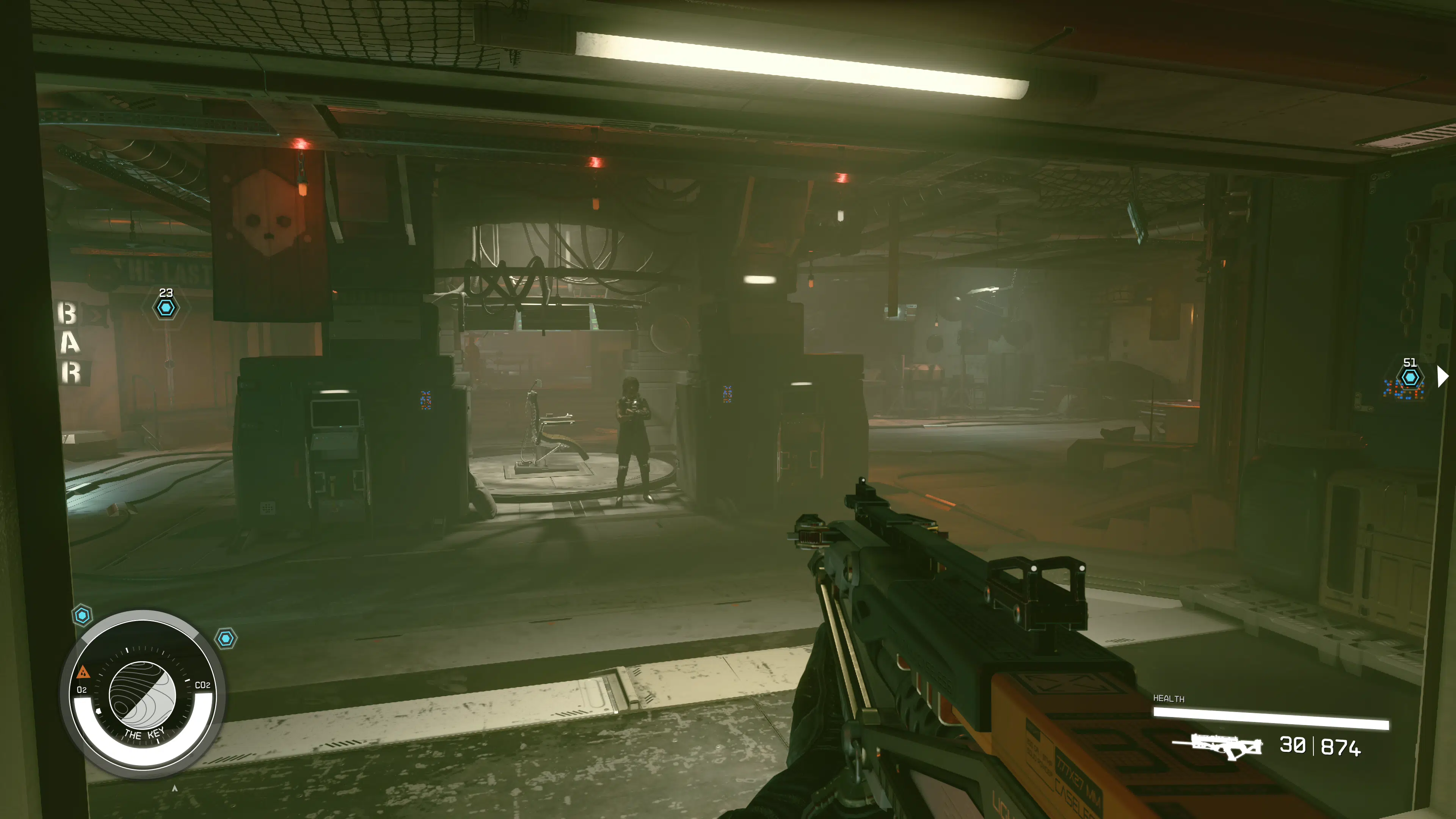
The whole skill system is oddly designed, too. As you level up, you unlock skill points, which can go into a specific skill, broken down by trees and tier levels. For example, the physical skill tree has four tier-one skills, and to unlock the next tier, you need to invest a certain amount of points into tier-one. Standard stuff here, and you can invest and use as many skills as you want. But then there’s an added layer of challenges after unlocking a skill for the first time. Each skill can be upgraded four times, but you need to finish the challenge to upgrade them. So take locking picking, for example. To become an expert, you need to lockpick ten times. Then, to become a master, you need to lockpick another fifteen times. And so on.
This may sound all right, and to some, that may be, but to me, it felt like forced padding that could have been fixed with one simple change: being given a skill point for completing a challenge. Currently, the only way to earn skill points is by leveling up. I know the purpose of it is to reward your playstyle, but it didn’t make me want to go out of my way to finish these challenges when I could invest in something free. Leveling is slow, which is nothing new for a Bethesda title, but when you invest so much time in that already, it gets a little tedious having to do a challenge on top of that. They removed the level requirements, but the replacement isn’t much better. But who knows, maybe others will like it more than I did.
I think the big thing most will notice is the load screens. Seeing that this is a new version of the Creation Engine (dubbed Creation Engine 2,) Bethesda has introduced many improvements over the previous. These include better visuals, performance, physics, overall polishing (I’ll get to that later), offering more significant environments and bigger ones, and much more. Unfortunately, those pesky load screens that have plagued past Bethesda games are still there. It’s gotten better, mind you, as there are more buildings you can enter in and out without any loading, but there are still plenty of interiors scattered around that you’ll always have to load into. Luckily, they’re just a few seconds if you use a decent SSD.
As for the space-traveling itself, expect a lot of loading into things there, too. It’s not seamless, as you can’t go from space and fly to the surface of a planet. You can’t even fly to the next star. You have to chart a course to it and either fast travel to the spot immediately by pointing at it or fast travel to each point between. What’s even stranger is sometimes, when you select a planet to fast travel to, it instantly puts you on the planet itself, while at other times, it’ll set you outside of its orbit just for you to go back into the menu again and have to select land again. You’ll find out quickly that you’ll spend a lot of time on the fast travel menu.
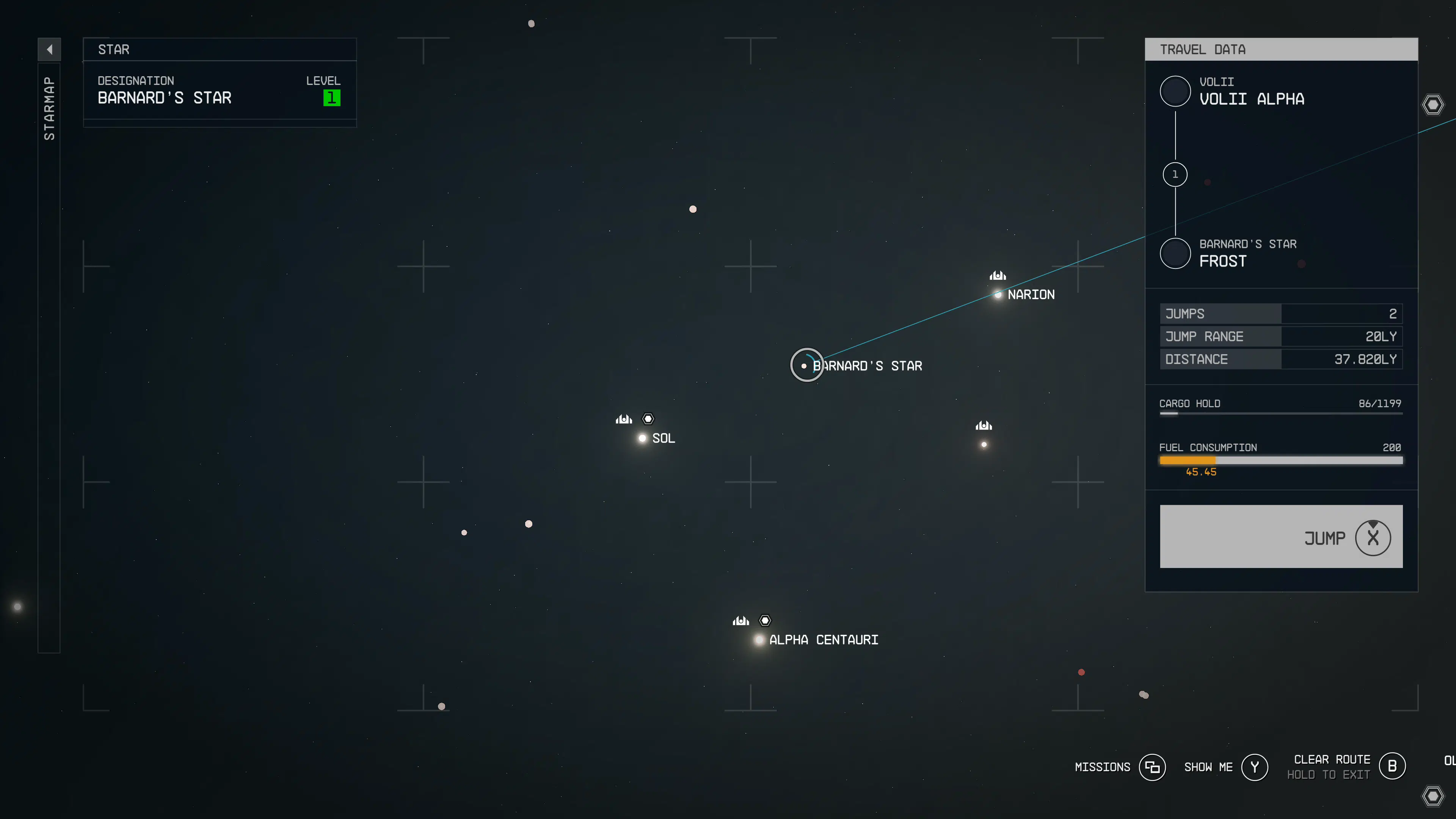
There are also a couple of mechanics that feel half-measured, or they don’t do anything at all. Going back to space traveling, when you jump between different points, your ship consumes fuel, which also determines how far you can jump. The thing is, there’s absolutely no reason why this should ever be the case because you have an unlimited amount of it. You will never run out despite the game saying you will because as soon as you jump to a point, it instantly replenishes, and you can go back and fast-travel again. So, what’s the point of the fuel mechanic if it essentially does nothing? They could have slapped a fuel sticker in the cockpit, and it’d achieve the same result.
The stamina system is associated with H2O and CO2. You run, you start consuming your suits H2O, and CO2 builds up, causing you to take damage. It makes sense, but it lacks dynamic components. Whether you are in space or on a breathable planet, this system could care less as it acts the same in any conditions. If I have an unlimited supply of H2O, shouldn’t my CO2 build-up be non-existent, or at least not enough to harm me?
This is a tiny thing, but like fuel, there are plenty of other mechanics that don’t feel entirely complete or thoroughly thought out with a real purpose. It teeters on the edge of wanting to be a full-blown simulator. If anything, this is probably an indicator that we’ll get a survivor mode down the road, which I’m all for. But at the moment, some things may seem out of place.
I know reading all this, you’d probably get the impression that maybe I don’t like the game, or it just isn’t for me. It’s the opposite. Starfield is easily amongst my favorite gaming experiences this year, and without a question, it will be gunning for some Game of the Year awards this 2023. But I do think there are a few things holding it back, some of the above being part of those reasons. However, I can promise that in due time, most of these will be addressed. And on the plus side, none of these issues I have are what I would call game-breaking. This brings up a big question: How buggy is Starfield?
Bugthesda…Free?
When you think of Bethesda, you typically think about all the incredible RPG experiences they’ve crafted over the last decades. There’s no other studio out there producing games like the ones from the Fallout and Elder Scrolls series.
So unsurprisingly, many have been kind to the studio in that when it comes to bugs and performance issues, they’re usually ignored and pushed to the side to focus more on the good rather than the bad.
But performance and bugs should always be a concern for any title out there, as their severity could immensely impact the end user’s experience, and not pointing them out would mean you want a studio to continue to repeat itself rather than improve.
This happened release after release for Bethesda’s titles, eventually leading to one of their most broken and worst-reviewed titles, Fallout 76.
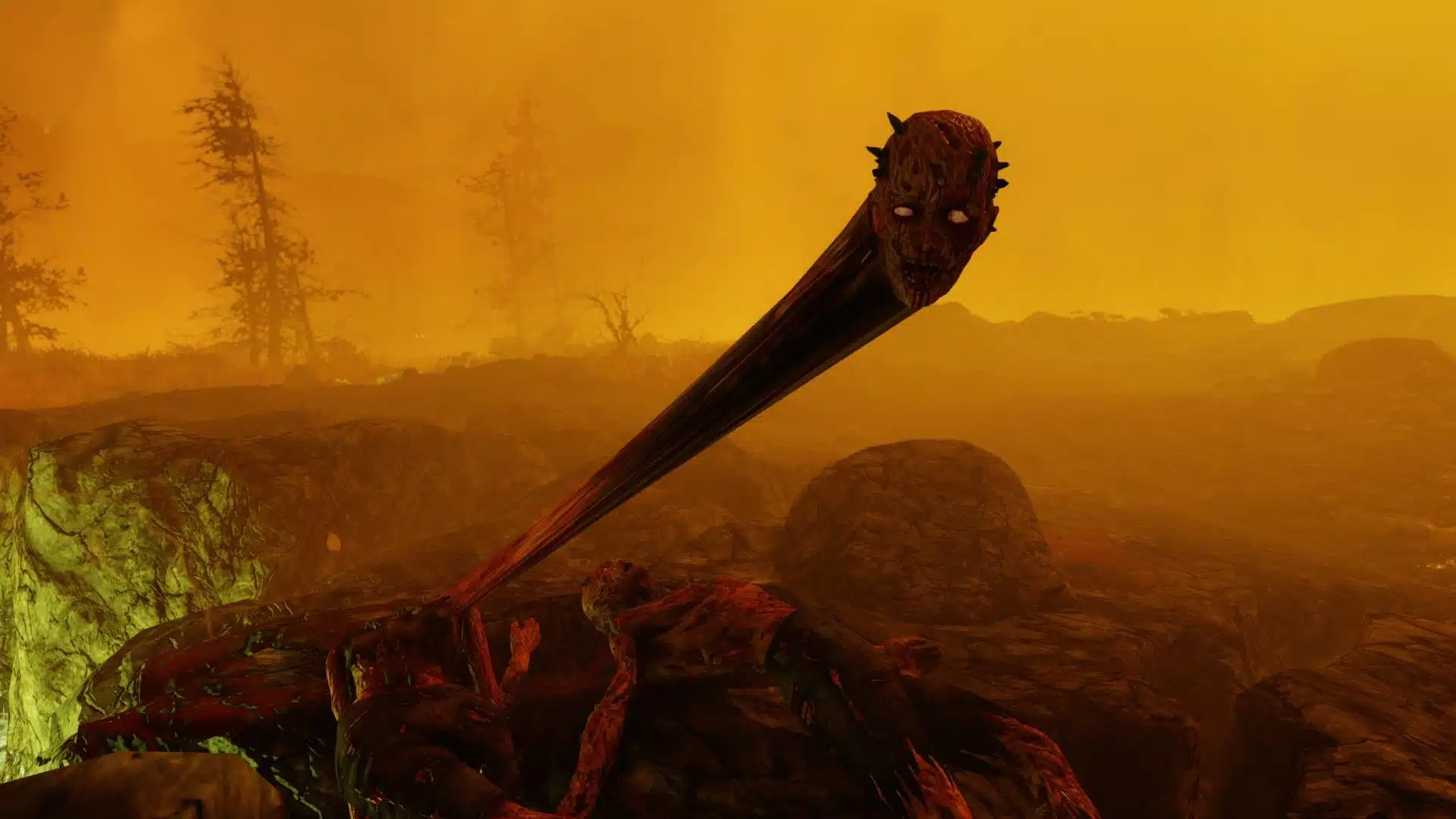
There’s no need for me to dive into the specifics of Fallout 76, as it’s well documented in nearly every review, as well as by the community, but given the state of the game at the time of launch, it was clear to everyone that something needed to change at Bethesda Software.
Fast forward a few years later, and the studio revealed they were working on a new original IP, the first in over 16 years. Dubbed Starfield, anticipation soon filled the air, with the studio promising that this would be their biggest and most ambitious title yet. However, with it came concerns, as many had begun setting the stage of expectations for it to be possibly one of their buggiest games to date. And sure, Microsoft owns the studio now, but concerns remained, as several other major projects under the Xbox were falling behind with delays, cut content, and questionable performance issues (looking at you, Redfall.)
So, I’d be lying if I said I wasn’t part of the many who believed Starfield might be in trouble because I truly thought there would be bugs and performance issues around every corner going into this review. However, after clocking in over seventy hours, those expectations could not be any further from the truth.
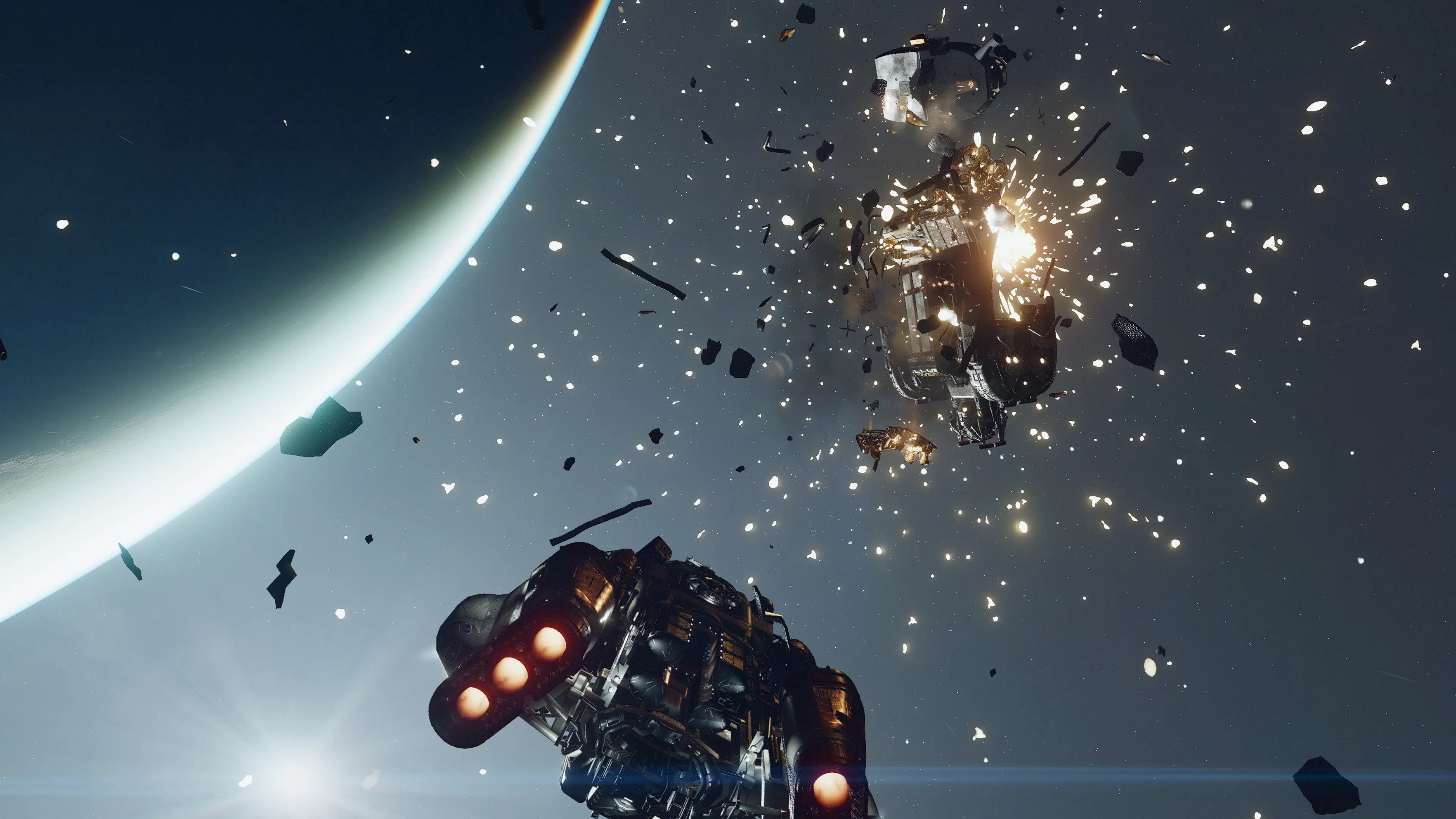
Starfield is, by far, Bethesda’s most polished game, not just in bugs but in performance and visual presentation. I’ve clocked in a little over 70 hours (and plan on doing plenty more) over the last two weeks, and not once did I ever run into any game-breaking, progression locks, severe crashes, or save lost. I’m usually that guy who plays through a Bethesda game, eventually being forced to restart my entire campaign, all because an NPC bugged out, my quest marker went missing, or the game wasn’t loading in an area, graphics freaking out, and even death and crash loops.
At worst for Starfield, I had one graphical bug that got patched in the day one update where all the NPCs in the game suddenly went bald. It was a hilarious bug, but it didn’t break my game, and a simple restart fixed it. Otherwise, I’m completely blown away by how polished Starfield is. This level of polish is not one I expected from the studio, but it is one you’d hope every AAA game has. Now, I should point out that just because I’m having a near bug-free experience does not mean that will be the case for everyone else. With the different available PC configurations out there and having a far larger group of players going off and seeing areas I’ve yet to see, this may be different for some at launch. That was evident when I saw the day one patch notes, which addressed several bugs, none of which I encountered other than the NPCs’ baldness bug.
But even then, looking back at past Bethesda games where those bugs were worn like badges on their chests as if to be proud of, Starfield wears one that is rightfully earned for its level of polishing. It’s hard to explain, but upon booting, there was this feeling that was immediate that made me think, “Wow, this looks and feels great,” and it’s one that stuck with me throughout my entire journey.
Now don’t get this wrong, as if I’m saying there are zero bugs because there are some, but none to go off and write Starfield off as a mess. As I said, it was far from it, with most encountered bugs being rare, like something made a minor mistake rather than breaking down unpredictably.
I suppose the next thing to talk about is Starfield’s performance. While I can’t comment on how it runs on the Xbox Series consoles, I can say to all PC gamers out there who meet the minimum requirements you’ll be delighted to know that Bethesda has given it their all to ensure that the PC version runs as best as it possibly can (minus DLSS support).
Your mileage may vary, but I tested Starfield on a few different builds (full story completion on each, which means I beat the campaign four times), and I got this:
Build #1
- GPU: Nvidia RTX 4090
- CPU: AMD 7900X
- RAM: 32GB DDR5 6000Mhz
- Storage: NVME SSD (Gen 4) with r/w speeds around 7,000 MB/s
- Presets: All options are set to ultra (or the highest) with a target of Full 4K resolution. No Ray-Tracing is available at this time.
This is my primary build, which may be considered overkill to some. Regardless, those sporting the same configurations or stronger can rest easy knowing that Starfield runs like an absolute dream with everything set to ultra. For the frame rate, I settled for software locking (out of choice) it to 60fps, though you can expect this to be pushed between the high 90s and 120s. Even more, if you lower the resolution to 2K. Sadly, there’s no DLSS support to take full advantage of Nvidia cards, but FSR seems to be doing a great job in Starfield.
To help combat those load screens, I recommend using an SSD with fast read and write speeds, which help keep those loads to a few seconds. Though in our other builds with lower rates and older PCIe gen, it didn’t seem to matter. I suspect Starfield is utilizing Direct Storage, but I can’t confirm. Either way, the load times seem fast, there’s just a lot of them to go through.
Build #2
- GPU: Nvidia RTX 3080
- CPU: Intel 12900K
- RAM: 128GB DDR4 3600Mhz
- Storage: NVME SSD (Gen 4) with r/w speeds around 5,000 MB/s
- Presets: All options are set to high with a target of full 4K resolution.
This is my workstation; there is no reason for me to have that much RAM. I only got it because there was an insane deal on it, and my motherboard could support it. I promise you it’s not because I have one million Chrome tabs open…I swear, please believe me!
Ignoring this machine’s ridiculous amount of unused RAM, Starfield mainly ran at a solid 60 FPS at 4K resolution. You can expect random hitches occasionally, but nothing detrimental to the experience. Lowering the resolution will provide better frames (if not more) and some options to be increased to ultra. If you go for 4K and set it to ultra, expect frames to hover between 30-45 FPS.
Build #3
- CPU: AMD 5800X3D
- GPU: Nvidia RTX 3080
- RAM: 32 GB 3600MHZ DDR4
- Storage: NVME SSD (Gen 4) rated at 4800 MB/s
- Presets: All options are set to high with a target of full 4K resolution.
Outside of the CPU, this build is very similar to Build #2. The experience is mostly the same with a stable 60fps when running at 4K. Setting everything to ultra also seems to have a similar performance hit as build #2, with drop frame rates between 30-45 frames-per-second.
Build #4
- GPU: Nvidia RTX 3060
- CPU: AMD Ryzen 5 1500x
- RAM: 16GB DDR4 3200mhz
- Storage: NVME SSD (Gen 3) 3,000 MB/s
- Presets: All options are set to medium to low, with a target resolution of 1080P
We’re over the minimum requirements outside the CPU on this build, which is a gen behind the AMD Ryzen 5 2600X. Of course, that doesn’t mean you can’t run the game, but anyone looking at these specs can probably tell that the CPU is bottlenecking everything else. Still, Starfield can push close to 60fps in Medium, targeting 1080P. You can lower the visuals to low to increase the frame rate, but I can’t promise it will look good.
If you feel daring, you could try and play with these specs running at ultra, but then expect frames to be around 30-35, with drops below that being common. It’s essentially t the point where it’s unplayable, but it will help in photo mode if you are looking to catch the game in its best possible state on your hardware.
Overall, I’m impressed by the optimization level that Bethesda has delivered with Starfield. Expectations have been exceeded, and I’m glad to see it run smoothly on both higher and lower-end PCs. Of course, things may differ as more and more people get their hands on it, but based on my testing and what I’ve heard from other reviewers, I expect Starfield to be one smooth experience for most players. This is undoubtedly Bethesda’s most polished and best-performing title thus far.
The Final Countdown
Despite some of the things I have issues with, I can confidently say that Starfield is an absolute must-play. There’s so much to love about the game, and honestly, it might just be the best space RPG out there of this caliber. It has everything you’d want from a Bethesda game: a deep and prosperous universe filled with endless possibilities and limitless potential. Be who you want to be, go where you want to go; your freedom is in your hands, and what you do with it is entirely up to you in Starfield.
Score: 9/10
Pros:
- The story is fantastic, but the role-playing aspect takes the spot. This truly is a story about you.
- Loads of side quests to play. They’re beefy, too, especially the faction missions.
- Visuals – It helps that I like space, but the graphics are jaw-droppingly good.
- Smooth performance and a very polished experience.
- General gunplay and character animations feel great.
- The score – The music fits so damn good, playing at just the right moments.
Cons:
- The skill and leveling system has unnecessary padding with the challenges.
- Plenty of mechanics don’t do much and could use tweaking.
- There are a lot of menus to go through, which becomes annoying as the game wants you to use the fast-travel system as much as possible.
- The lack of vehicles leaves a lot of desire when exploring planets. You’ll grow bored quickly.
- Only a few planets are hand-crafted, whereas the rest (over 900) are procedurally generated. They’re gorgeous, but there’s not a lot to be found out there, with most activities being rinse and repeat for these planets.
Starfield review code provided by the publisher. You can read MP1st’s review and scoring policy right here.
